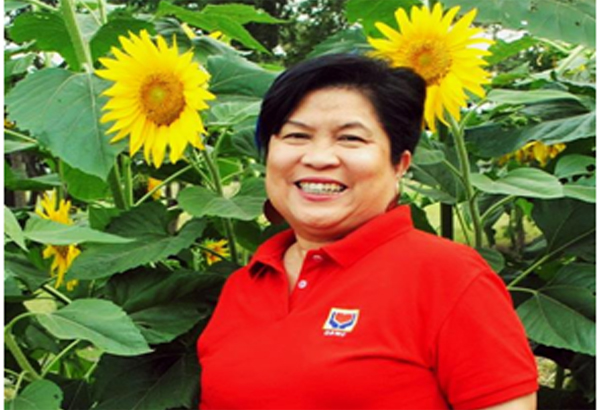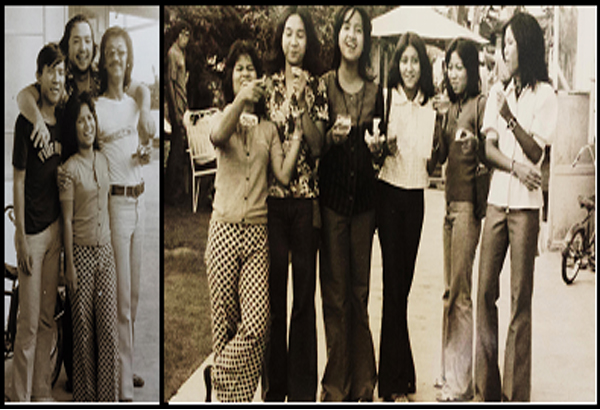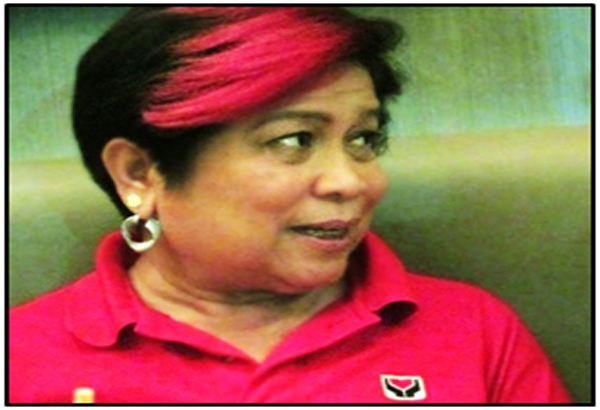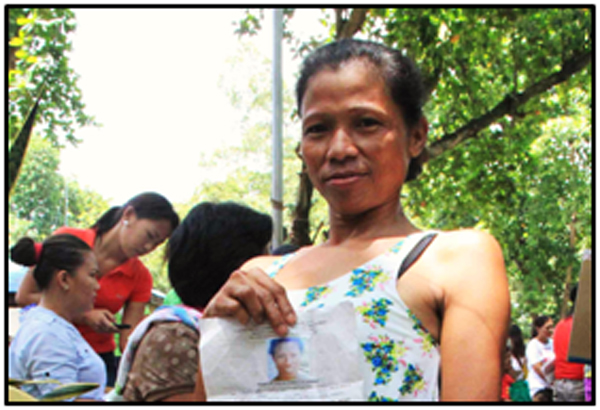My Dinner with Dinky

When you’re in charge of social services in a country such as ours — constantly besieged by natural calamities and stubbornly-high poverty rates — you’re bound to be the target of all sorts of accusations, well-informed or otherwise. But then again there’s “Dinky” Soliman, who has served under two presidencies, weathered all manner of controversy, and, miraculously, still manages to retain a sunny disposition.
Sec. Dinky is familiar to me not only because of her role as head of the Department of Social Welfare and Development (DSWD) but because she also heads the Human Development and Poverty Reduction Cabinet Cluster (HDPRCC), which covers 26 government agencies dealing with poverty and development. (Full disclosure: although I work for the Office of the President, I’m currently detailed to the HDPRCC). I’ve always known her to be tough, shrewd, diplomatic and indomitably energetic, with her staff constantly scrambling to keep up with her. Highly intelligent, she presides over Cabinet meetings with a soft touch, demonstrating an impressive ability to synthesize the most complex technical debates into a few clear lines.
The other day, we sat down for a meal and I had a chance to ask her a little about herself and, naturally, about some pressing issues in the news.

ACTIVISM. Since college, Soliman has been involved in social and political development.
Corazon Juliano-Soliman grew up in Tarlac, shuttling between Negros and Manila, to a father working in Physical Education and a mother who was a homemaker. It was an idyllic existence, with friends from all walks of life. Nonetheless, she quickly became conscious that all was not well outside her home. At 14, she learned from a nun close to her about the oppressive conditions that farmers had to face. And many of the parents of her playmates — some of whom were from the New People’s Army — were getting killed. By the time she was 16, she decided, like her father, to go off to the University of the Philippines (UP) to study Political Science in an attempt to make sense of her wider world. The nuns warned her that she might become a communist at the university, but that made her all the more determined to go.
UP in the 1960s, of course, had long been the site of student activism. She arrived on campus in 1969, at the height of the roiling student movement. Her eyes lit up when she discussed the Diliman Commune, the First Quarter Storm and her friendship with the revered activist-hero Edgar Jopson. By the time she was 17, she had decided that theories were insufficient without practice. Seeking to channel her activist impulses, she decided to embark on social work, specifically with street children.
After graduating, she became part of a generation (with Butch Abad and Ging Deles) that started non-governmental organizations (NGOs) in the Philippines focused on community organizing, not necessarily related to the Church. These NGOs — which were animated by liberation theology and the pedagogy of the oppressed — had long-term developmental goals that gained the recognition and support of international funders. By 1983, she was deep into political organizing, working in pro-democracy organizations opposed to Martial Law. In the wake of EDSA I, she continued with her NGO work until she joined the government as head of DSWD. She served first under GMA, then under PNoy.
I asked her to compare her experience of working under both presidencies.
“For GMA,” she said, “a significant number of Cabinet members were serious in undertaking reforms to address issues of poverty. But the decision-making process was remarkably cumbersome and long-winded. Multiple considerations were necessary before decisions could be made, resulting in too many compromises to the point of undermining our original aims. In contrast, Cabinet officials under PNoy are given more leeway to decide on policy implementation.”
I then asked her about some of the challenges of providing for the massive social service needs of the country.
She replied that it is critical to facilitate processes where the poor are empowered, and where they see the long-term stakes in our programs for poverty alleviation. She stressed that they need to see themselves as active, and not passive, agents — a difficult thing to do, given the oppressive forces they face on a daily basis. “We need programs that lead to empowerment,” she reiterated. “Even though the government has more resources, it still has more challenges, with greater responsibility and accountability, to deal with than NGOs.”
Sec. Dinky went on to cite the problems posed by widely-shared perceptions of the poor: “Filipino society’s view is that they are lazy — or that imperialism, feudalism, bureaucratic capitalism, and everything in between, are to blame.Working for the poor can be easily manipulated for political gain, and the poor themselves can be easily manipulated.”
Our conversation then shifted to more recent events.
A couple of weeks ago, Time Magazine reported that indigent families were treated to an outing by DSWD from January 14, the day before Pope Francis arrived in the Philippines, to January 19, the day he left. These 490 homeless men, women and children had been living along Roxas Boulevard and Luneta Park. They were taken to what Sec. Dinky refers to as a “Family Camp” in Chateau Royale in Nasugbu, Batangas, where DSWD spent as much as P4.75 million to house and feed the families for about six days.
Pundits in print and social media criticized Sec. Dinky and the DSWD, claiming that they sought to hide the poor from the Pope. I asked her if this was true.
“There are 11,000 poor families all over the metropolis. How can we hide them?” she replied. “To begin with, the Family Camp was no secret.” She explained that the camp was meant to register and initiate the poor under the Modified Conditional Cash Transfer Program (MCCT). The MCCT is administered by the Social Technology Bureau of the DSWD, designed to furnish alternative livelihood programs for the poor. It targets the segment of the poor who don’t meet the criteria for the Conditional Cash Transfer (CCT) Program set by the National Household Targeting System for Poverty Reduction (NHTS-PR). In a nutshell, as indigents, many under MCCT don’t have households that can be counted under NHTS-PR, so it is necessary to count and consolidate them in a different way. “Therefore, they need to be brought together and registered under one roof, which is what happened in Chateau Royale,” she added.
I asked her about the timing of the camp, which to some seemed suspicious.

CONSIDERATIONS. Soliman explains DSWD’s Family Camp program and its timing in relation to the Papal visit. Photo by Jesse Baban
“There were several pressing considerations,” Sec. Dinky replied. “First and foremost, was the Pope’s security, given the intelligence that there had been threats on his life. Any street child could have been used by syndicates or other groups to harm the Pope, had the government not been careful. There is the need to offer children protection from syndicates who use them for other crimes: some street children are trained to be pick-pockets and we wanted to protect the people flocking to see the Pope in the millions. With such a big crowd, many could also have been trampled upon. And, quite simply, if we hadn’t cleared the streets, we would have been criticized anew. Either way, the government would have been criticized.”
But why a family camp, and why in a beach resort, many people wanted to know?
The family camp, she said, is just the first step in qualifying for the MCCT. “With children inhaling smoke, living on pavements, and sneaking up to faucets to take a bath, it is important to show them that there’s another life, another way of living -- that there’s a decent, dignified life out there for them,” she explained.
She further clarified that the Family Camp was not conducted solely in preparation for the Pope’s visit. A total of six camping activities have already been conducted by the DSWD under her watch in partnership with 17 local government units (LGUs) in Metro Manila from 2011 to 2015. In 2012, the DSWD expanded the program to include homeless families.Asked if they would hold another Family Camp during the upcoming Asia-Pacific Economic Cooperation (APEC) meeting, she responded, “before, during, and after the APEC meeting, we’ll continue to hold family camps.” She added, “In general, we prefer to relocate the poor to a nice resort rather than send them to overcrowded and tightly-spaced LGU facilities.”
I asked her if there was anything she would have done differently.
“Next time,” she said, “I will inform the public beforehand about what I plan to do so there is no surprise.”
I then asked about DSWD’s long-term plan for the homeless.
“The government will give them a place to stay for six to twelve months. They will receive skills training that will equip them for a job. Once they are employed, they are expected to start paying their own rent. It is up to them to keep the jobs and stabilize their own lives. DSWD is simply enabling these poor families to improve their condition in the long-term.” The challenge, according to her, is also to provide them with the capacity for alternative livelihoods. For instance, those working as vendors who have entrepreneurial skills can be provided with capitalization for micro-enterprise activities.
Recently, the DSWD celebrated its 64th Anniversary, and I asked Sec. Dinky how she sees the future of the agency.
“DSWD focuses on investing in children by keeping them healthy and in school, empowering the community, and providing sustainable livelihoods for self-sufficiency.”

MCCT. MCCT targets the segment of the poor who do not meet the criteria for the CCT Program. Photo from DSWD FO11 website
She said that the agency intends to continue with its mission of ensuring the survival, subsistence and self-sufficiency of some 2.3 million poor families and provide social protection for another 5 million families. Such a task will require providing increased technical assistance and capacity building to local social welfare and development units in as many as 40 provinces.
So what can we learn from this experience?
Sec Dinky: “The cacophony of voices shows the ambivalence of society when it comes to helping the poor. One voice says: ‘why are you hiding them? They will be used: they are vulnerable.’ The other says: ‘why bring them to luxurious places?’”
“The good thing about this debate is that, hopefully, more people in society will do something about the poor, especially Manila’s street children.”
- Latest
- Trending
























